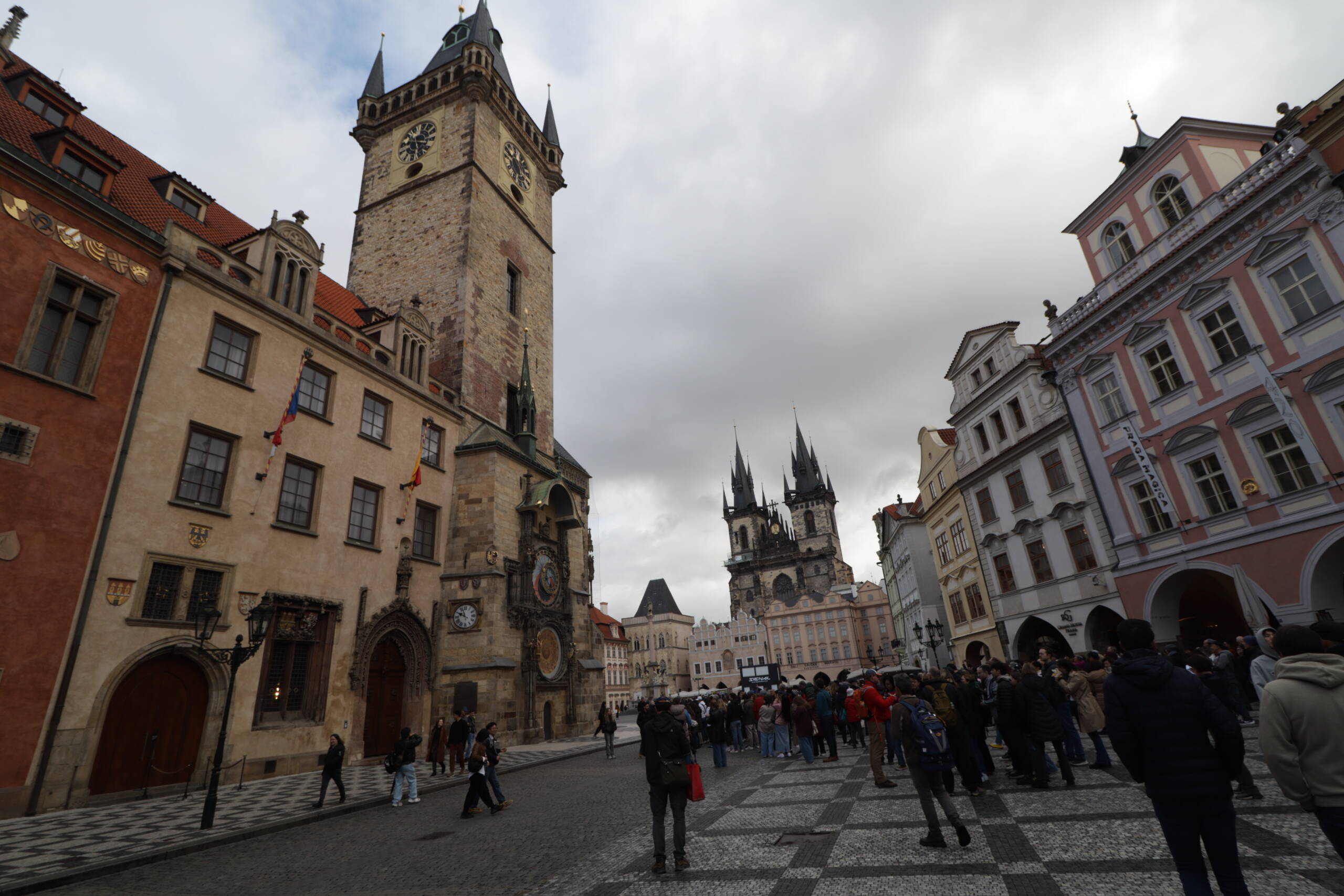Why I Don’t Always Correct Lens Distortion
There’s a temptation in photography to always “fix things.” Straighten horizons, remove noise, clean up blemishes, correct distortion. Software makes it almost effortless, as if we’re expected to present reality in its most polished, technically flawless form. But when I stand in a place like Prague’s Old Town Square and raise a wide-angle lens toward the Astronomical Clock, I don’t necessarily want perfection. I want a photograph that feels like the experience, and experience isn’t tidy. Sometimes distortion carries the mood better than any correction ever could.

Looking at the photo, the tower leans as if it wants to step forward, joining the crowd gathered below. The Gothic spires of Týn Church in the background slice through the sky at slightly exaggerated angles, dramatic like stage props in a theater. The whole scene bends in subtle arcs, the cobblestones running like tilted floorboards, the pastel facades leaning toward the square. It’s not technically “accurate” architecture, but it reflects the sensation of being there—overwhelmed by history, light, atmosphere, and the sheer verticality of it all. If I pulled those lines back into rigid geometry, some of that energy would collapse.
There’s something psychological about distortion that matches the way we remember travel. Memory is selective and subjective; it bends time, scale, and distance. That tower you thought stretched endlessly skyward really did, at least in the moment. That square seemed to spill open like an amphitheater. Wide-angle distortion mimics that impressionistic recall, and sometimes I’d argue it tells a deeper truth than a geometrically corrected photo ever could. Reality, after all, isn’t experienced with a ruler—it’s experienced with eyes that dart around, a neck craning upward, a mind exaggerating what impressed it most.
I’ve noticed that leaving distortion in place creates a cinematic quality. The scene becomes less about cold architecture and more about the drama of people inhabiting it. In Prague, the crowd itself became part of the distortion—their anticipation of the clock striking the hour mirrored in the way the buildings seemed to bend inward, almost like the city was leaning down to watch alongside them. The skew isn’t a flaw; it’s a compositional ally that directs your attention and heightens tension.
Of course, there are times when correction makes sense. If you’re shooting interiors where symmetry is the subject, or architectural studies where accuracy matters, then straightening is part of respecting the craft. But in street and travel photography, accuracy isn’t always the point. We’re chasing impressions, fragments of emotion, the fleeting “feel” of a place. Letting a lens show its quirks—like a wide-angle exaggerating height—can sometimes convey honesty through distortion.
There’s also a personal dimension: I like seeing my own perspective imprinted in the image. When I tilt the camera slightly upward and don’t correct later, it feels truer to how I actually looked at the square. There’s no neutral gaze; my angle, my decision not to “fix it,” becomes part of the story. I think about the way painters exaggerate scale or tilt perspective to guide the eye—distortion becomes part of the artistic language. Why should photographers always silence it when it’s whispering something interesting?
And then there’s the irony: when you correct distortion too much, the photo can start to look unnatural. Skyscrapers standing too upright can feel oddly compressed, as if robbed of their true physical weight. A city square with every vertical parallel can feel more like a rendering than a memory. In chasing accuracy, we sometimes erase the vibrancy that first drew us to raise the camera.
So when I post this image of Prague’s Old Town, I leave the lean intact. I leave the exaggeration in the tower, the playful tilt of the pastel houses, the dramatic rise of the spires. Because that’s how the city felt that afternoon—slightly surreal, slightly overwhelming, as if the stones themselves were alive and bending around the crowd. Correcting it would have been easy, but resisting correction let me keep the poetry.
Photography, at least for me, isn’t about reproducing reality like a photocopier. It’s about interpreting it, bending it just enough so the photograph conveys how it felt, not just how it looked. That’s why I don’t always correct distortion. Sometimes, distortion is the most honest thing in the frame.